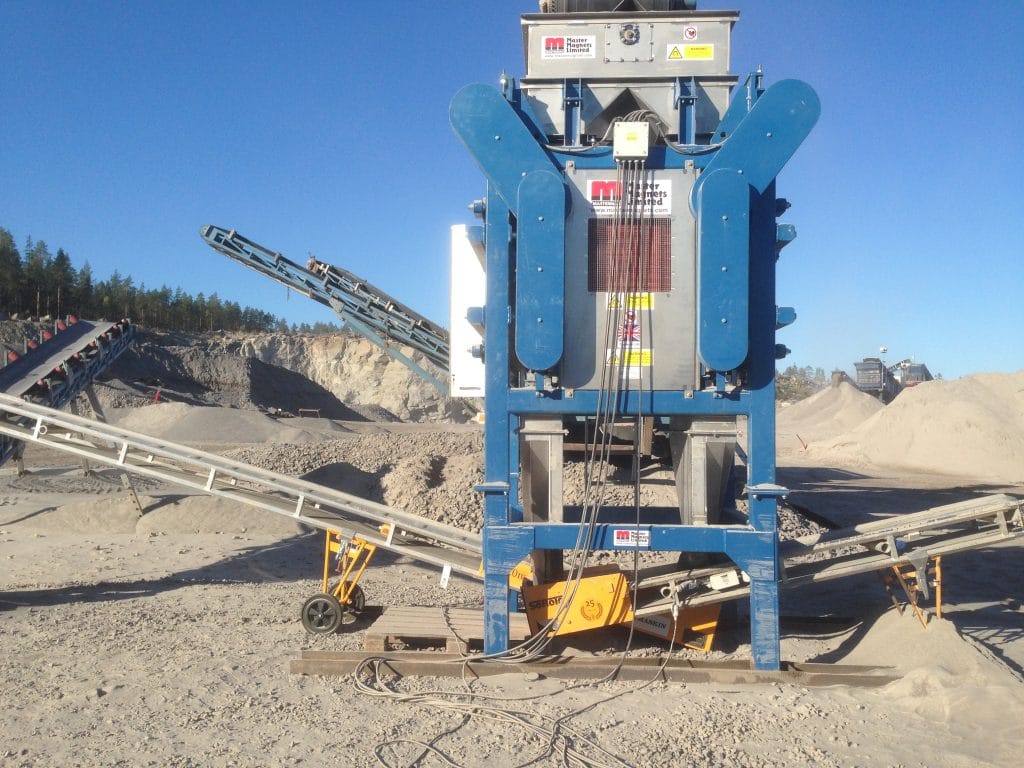Video Explanation of the Induced Magnetic Roll Separator IMR
By Paul Fears | 08 October 2018
The Induced Magnetic Roll Separator (IMR) has been used in the non-metallic mineral industry for decades. However, the popularity of this high intensity magnetic separator dwindled after the development of the Rare Earth (RE) Roll Magnetic Separator in the late 70s early 80s. Whereas the magnetic forces in an IMR were electromagnetically generated, high intensity permanent magnets like Neodymium Iron Boron were used in the RE Roll. As Rare Earth Magnet prices fell, making RE Rolls more economically viable, power costs were rising, further decreasing the popularity of the IMR. Rare Earth Magnet prices have risen in recent years and there is, once again, renewed interest in the IMR.

The Applications
Both the IMR and RE Rolls are used to separate weakly or para magnetic minerals from non-magnetic minerals in a dry state. These non-metallic minerals are widely used in the production of ceramics, plastics, glass, cosmetics, paper, and many other commonly used materials. Typical minerals being processed include feldspar and silica sand.
The Methodology
Dr Neil Rowson, a respected mineral processing engineer from the University of Birmingham, explains the operation of a Induced Magnetic Roll Separator.
In the video, Dr Rowson explains how the untreated non-metallic mineral material is fed from a hopper or vibratory feeder at a controlled rate onto a high intensity magnetic roll. Magnetic material is attracted to the magnetic roll face. This attraction alters the trajectory of the magnetically attracted mineral away from that of the non-magnetic material. A splitter plate is positioned between the two different trajectories, enabling a split of the two materials and separation of the weakly and papa-magnetic minerals.
Technical Video Presentations
Several technical video presentations by Professor Neil Rowson on the use of high-intensity magnetic separators in the minerals industry are available to view on the Bunting-Redditch website:
- Technical Explanation of Rare Earth Roll Separator;
- Technical Video Explanation of the Magnetic Disc Separator
Related Mineral Processing Technical Articles
Magnetic Separators – Mineral Processing Laboratory
Bunting-Redditch has one of the most comprehensive magnetic separation mineral processing testing laboratories in the world. Their Laboratory Technicians have decades of experience in mineral processing. Controlled tests ensure that the most suitable and cost-effective machinery is recommended for each application. The laboratory is equipment with a wide range of equipment including:
- Smaller scaled versions of industrial Magnetic Separators. This equipment is used to accurately scale up to industrial capacities and calculate performance guarantees;
- X-Ray Fluorescence and X-Ray Diffraction analysis are available for chemical assay and mineralogical identification to aid the development of a viable process route for each application;
For further information on our range of magnetic separation equipment designed for purifying ceramics and non-metallic minerals, or to arrange sample tests in our laboratory, please contact us on:
Email: Gordon Kerr at GKerr@buntingmagnetics.com
Telephone: +44 (0) 1527 65858
To keep up to date with our news and technical reports, please follow us on social media


